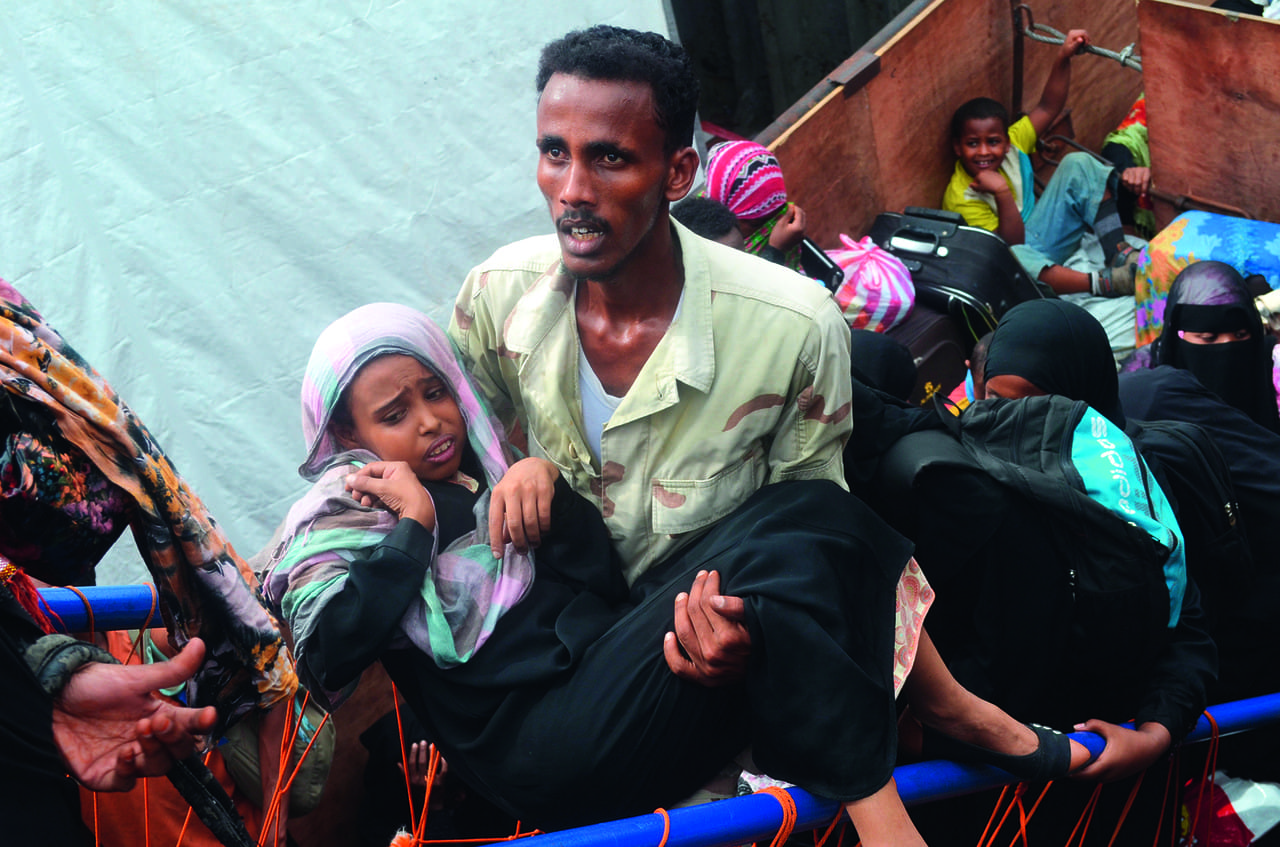As the Yemen conflict worsened throughout the year, many of those Somalis have returned home, often on the same boats as Yemeni asylum seekers.
One of those Somali returnees is Zeynab, who arrived in Bosaso, Somalia with her three children. “I remember preparing breakfast for my children, but it was not meant to be,” she says. “The gunfire and explosions had become intense. The fighting was at our doorstep. We had no choice but to flee for safety.”
The returnees and asylum seekers have been arriving in ships at the two main Somali ports of Berbera in Somaliland and Bosaso in Puntland. The ships arrive day and night, sometimes with up to 1,000 people on board.
In both locations, the ICRC provided a small amount of food and other essential items and Somali Red Crescent Society volunteers were on call, 24 hours a day, to offer basic first aid. Free phone calls were provided to all new arrivals to contact relatives back in Yemen, Somalia or elsewhere.
Zeynab, for example, lost contact with her husband amid the chaos. Upon arriving at Bosaso, Somali Red Crescent volunteers helped the two re-establish contact. “I was so worried,” says Zeynab, who had received no news from her husband for more than a month. “I heard his voice on the phone and was relieved he is alive.”
A similar dynamic is unfolding in Djibouti, which neighbours Somalia to the north and has received both Yemeni refugees and Ethiopian migrants, many of whom had been living in Yemen for years.
At the ports of Djibouti and Obock, the main entry points, the Red Crescent Society of Djibouti has also been offering free phone calls to people who want to call their families and say, “I am safe and well in Djibouti.” Unfortunately, the dynamics on the ground in Yemen at present do not allow volunteers or ICRC staff to send Red Cross messages on paper to people living in Yemen.
“In Somalia, the ICRC team not only monitored RFL [Restoring Family Links] services but wanted to see if those arriving from Yemen had other needs that the ICRC could address or forward to the relevant agencies,” says Ahmed Zaroug, the protection coordinator overseeing the RFL programme in Somalia.
“If you have unaccompanied children, they would have specific needs,” he notes. “They arrive traumatized from the dire incidents they have seen, while others are sick and some are wounded.”
 Red Cross Red Crescent magazine
Red Cross Red Crescent magazine 








 Tech & Innovation
Tech & Innovation Climate Change
Climate Change Volunteers
Volunteers Health
Health Migration
Migration